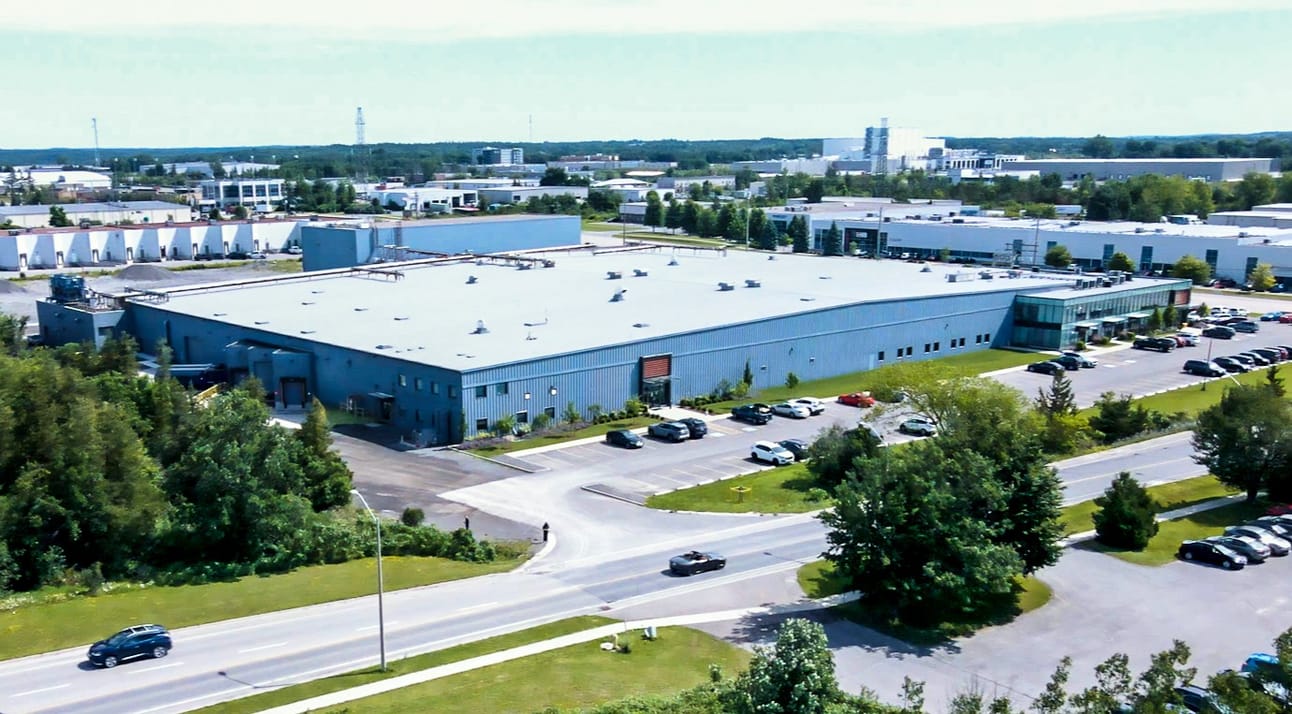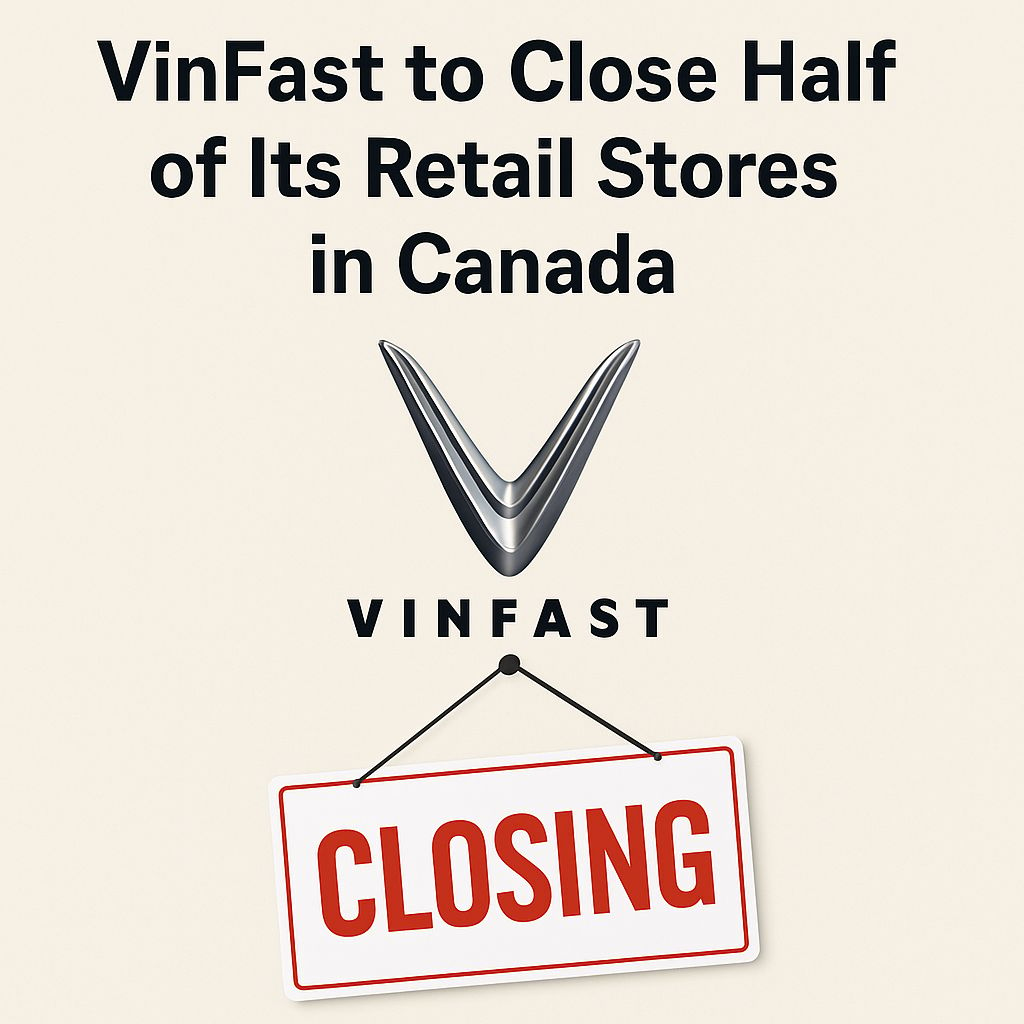- The EV North Newsletter
- Posts
- 🚗⚡EV North Newsletter
🚗⚡EV North Newsletter
June 12th, 2025 - Issue #163

Hello! Thank you for checking out this week’s EV North Newsletter!
Welcome to The EV North - a weekly newsletter that brings together some of the biggest EV news stories and delivers them to your inbox. There is a focus on Canada & North America but you’ll also find EV news from around the world!
Also, be sure to check us out on X / Twitter and LinkedIn!
In this issue:
Cyclic Materials Invests $34M in Rare Earth Recycling Centre in Kingston, Ontario.
VinFast to Close Half of Its Retail Stores in Canada.
Turn Power into Profit: Unlock Revenue from EV Fleet Charging.
Home Mechanic Doubles Nissan Leaf Range with DIY Battery Swap.
Tesla Robotaxi Spotted in Austin as Full Self-Driving Rollout Nears.
Amazon to Test Humanoid Robots for Package Delivery Using Rivian Electric Vans.
Xiaomi SU7 Ultra Sets New Production EV Lap Record at Nürburgring.
+ more!
Canada
Cyclic Materials Invests $34M in Rare Earth Recycling Centre in Kingston, Ontario.
Cyclic Materials has announced a $34 million CAD ($25 million USD) investment to launch North America’s first Centre of Excellence for rare earth element (REE) recycling in Kingston, Ontario. The new 140,000-square-foot facility will serve as the company’s industrial and research hub, creating 45 new skilled jobs and supporting the development of a circular supply chain for rare earth magnets.

Cyclic Materials’ 140,000 square-foot facility for rare earth material recycling, processing and R&D. - Image Source: Cyclic Materials.
Set to begin operations in early 2026, the facility will process 500 tonnes of magnet-rich feedstock annually using Cyclic’s proprietary REEPureSM technology. The output (recycled Mixed Rare Earth Oxide (rMREO)) contains essential elements like Neodymium, Praseodymium, Terbium, and Dysprosium, used in electric vehicle motors, wind turbines, and electronics. Feedstock will be sourced from Cyclic’s Arizona-based "Spoke" facility and a network of partners providing end-of-life magnet scrap.
The Kingston site will also include an advanced R&D centre and a mini processing line to refine next-generation technologies. Recycled materials will support key industry players, including Solvay, which signed an offtake agreement with Cyclic in 2024.
Currently, less than 1% of rare earth elements are recycled, with global supply chains heavily dependent on a few countries. Cyclic’s technologies aim to reduce environmental impact and increase supply chain resilience by recovering REEs from products like EVs, wind turbines, and hard drives.
Backed by national innovation programs and partnerships with Queen’s University, Kingston Process Metallurgy, RXN Hub, and others, the Centre strengthens Kingston’s role as a cleantech innovation hub. Hiring is underway for positions in operations, process technology, and R&D.
This investment supports Cyclic’s broader strategy to scale rare earth recycling infrastructure across North America and Europe, advancing clean energy goals and domestic resource security.
Are you on Reddit? Check out our subreddit at https://reddit.com/r/evcanada
VinFast to Close Half of Its Retail Stores in Canada.
VinFast, the Vietnamese electric vehicle manufacturer, is shutting down five of its ten retail locations in Canada as part of a shift in its retail strategy. The closures include three boutique mall stores and two showrooms in less central areas, as the company refocuses its resources to improve long-term performance.
Five VinFast locations will remain open in British Columbia, Ontario, and Quebec. One of the showrooms that will stay operational is located on Ambler Drive in Mississauga, near Dixie Road and Highway 401. VinFast first entered the Canadian market in December 2022 with a store opening at Yorkdale Mall in Toronto.

Image created using AI.
In a statement, the company emphasized its commitment to providing quality electric vehicles and customer service in Canada, while also noting the importance of adapting its approach to meet future growth opportunities. Later this year, VinFast plans to expand its authorized after-sales service network and is considering the introduction of franchise dealerships in Canada, though no final decision has been made.
Details on the timing of the closures and the potential impact on jobs have not been disclosed.
Turn Power into Profit: Unlock Revenue from EV Fleet Charging.
Fleet electrification doesn’t have to be just another expense, it can be a new source of revenue. Join this free virtual session to discover how Canadian fleets are turning charging into a profit centre. You’ll learn how to generate income through demand response programs, earn carbon credits, and take advantage of utility and clean fuel incentives, plus see real-world examples of fleets already making it work.

Speakers from:
Polara – Guillaume Brossard, VP Commercial
BC Hydro – Jason Scultety, Sr Key Account Manager, Fleet Electrification
Hydro-Québec – Angelo Cristofanilli, Business Development, New Technologies
Electric Autonomy – Emma Jarratt (Moderator)
📅 Thursday, June 19, 2025 | 🕙 10:00am PDT / 1:00pm EDT | 📍 Virtual Event
👋 Hello, one quick thing. If you’re enjoying this, can you do me a favour and forward it to a friend? Thank you!
EV Around the World 🌏
Home Mechanic Doubles Nissan Leaf Range with DIY Battery Swap.
A creative EV enthusiast has managed to double the range of a first-generation Nissan Leaf by swapping in a 62 kWh battery from a second-generation model, all from the comfort of his driveway. Using basic tools, jack stands, and a set of hydraulic jacks, YouTuber "Battery Man" completed the core installation in just three hours.
The original Leaf, known for being one of the first mass-market electric vehicles, was limited by a small, air-cooled battery prone to degradation. Early models topped out at 30 kWh, offering an EPA-rated range of about 172km. By retrofitting a newer 62 kWh battery, the upgraded Leaf now shows 366km on a full charge.
The process involved fabricating simple metal brackets, installing a new pyro fuse and rear springs, and using a CAN bridge (a low-cost device that communicates with the vehicle’s control systems to accept the new battery). Some software configuration was needed, but existing documentation made it accessible to those with basic mechanical skills.
With used Leafs available for as little quite cheaply and second-gen batteries ranging between $5,000 and $10,000, this upgrade presents a compelling option for extending the life and capability of aging EVs. As EVs become more common, projects like this highlight how battery swaps may become the next frontier for DIY automotive enthusiasts.
Tesla Robotaxi Spotted in Austin as Full Self-Driving Rollout Nears.
Tesla’s upcoming robotaxi service is showing signs of progress, with the first driverless vehicle recently spotted operating on public roads in Austin, Texas. A short video shared online featured a Tesla Model Y navigating a turn without anyone in the driver’s seat, followed by a chase vehicle. The sighting signals that Tesla’s initial robotaxi deployment is moving closer to launch.
HOLY CRAP ITS A #ROBOTAXI!!
@SawyerMerritt@WholeMarsBlog@DirtyTesLa@niccruzpatane— Terrapin Terpene Col (@TerrapinTerpene)
1:22 PM • Jun 10, 2025
The vehicle, marked with a subtle Tesla robotaxi logo on its front doors, appears to be part of early testing in a real-world setting. Tesla is now officially listed as an autonomous vehicle operator in Austin, alongside companies like Waymo and Zoox, according to the city’s Department of Motor Vehicles website.
Elon Musk has stated that the public could begin using Tesla robotaxis in Austin as early as the end of June. While many existing Tesla vehicles are already equipped with the necessary hardware, the Full Self-Driving (FSD) software is still undergoing refinements. Musk noted that the robotaxis in Austin are running a new version of FSD that will soon be integrated into the main branch of the software. A more advanced version, currently in internal testing, includes four times as many parameters but requires further development before public release.
These are unmodified Tesla cars coming straight from the factory, meaning that every Tesla coming out of our factories is capable of unsupervised self-driving!
— Elon Musk (@elonmusk)
5:30 PM • Jun 10, 2025
Tesla plans to use teleoperation during the early phases of deployment to ensure safety. With real-world testing now underway, the company is positioning itself to enter the driverless ride-hailing space, starting with its existing fleet in Austin.
Do you enjoy one or all of the following?
Learning about EVs?
Deep dives on EVs and the EV industry as a whole?
An email with character and humour?
Someone else connecting the EV dots so you don’t have to?
Then The EVwire is the place for you! Check it out below:
|
Amazon to Test Humanoid Robots for Package Delivery Using Rivian Electric Vans.
Amazon is preparing to test humanoid robots that could one day deliver packages directly to customers' doors. The robots are designed to exit Rivian electric delivery vans, walk to the doorstep, and complete the final handoff.
Currently, Amazon uses over 20,000 Rivian electric vans for deliveries, with plans to expand the fleet to 100,000 by the end of the decade. While human drivers still handle the last leg of delivery, Amazon is now exploring how humanoid robots could automate this step.
According to a report from The Information, Amazon has created a test facility at its San Francisco office, featuring a delivery-themed obstacle course called a “humanoid park.” The space includes a Rivian van to simulate real-world delivery scenarios, allowing the robots to practice getting in and out of the vehicle while carrying packages.
The company will test multiple humanoid robots, including one from China-based Unitree. Although Amazon already uses autonomous robots in its warehouses, those machines operate in controlled environments. This new initiative is the company’s first major step toward deploying humanoid robots for outdoor residential delivery.
Amazon is also reportedly developing its own robot software, based on technologies from DeepSeek-VL2 and Alibaba’s Qwen, to power these machines. Initial trials will take place inside the test facility, with outdoor pilot deliveries under consideration in the near future.
Xiaomi SU7 Ultra Sets New Production EV Lap Record at Nürburgring.
Xiaomi’s SU7 Ultra has officially become the fastest production electric vehicle to lap the Nürburgring Nordschleife, clocking in at 7:04.957. This time beats the Porsche Taycan Turbo GT’s 7:07.55 and the Rimac Nevera’s 7:05.298, making the SU7 Ultra the quickest factory EV around the iconic German track. Unlike a previous 6:46 lap completed by a stripped-down prototype, this record was achieved using a fully street-legal version of the car.
Powered by a triple-motor setup generating between 1,527 and 1,548 horsepower, the SU7 Ultra can sprint from 0 to 100 km/h in under two seconds and reach a top speed of 350 km/h. This achievement marks a major milestone not just for Xiaomi, but for China’s EV industry as a whole, signaling the country's growing presence in high-performance electric mobility. The SU7 Ultra’s record-setting performance highlights Xiaomi’s potential to compete on a global stage and reinforces Nürburgring lap times as a meaningful benchmark in the evolution of electric vehicles.
QuickEV
EV Tweet of the Week
We just published a new behind-the-scenes peek at the development of R2: rivn.co/R2-Design
Here are four big takeaways 👇
1) Our designers and engineers worked hand-in-hand simplifying and refining R2 to make a vehicle that is both beautiful to look at and efficient to
— Rivian (@Rivian)
7:20 PM • Jun 11, 2025
